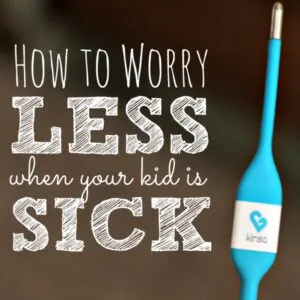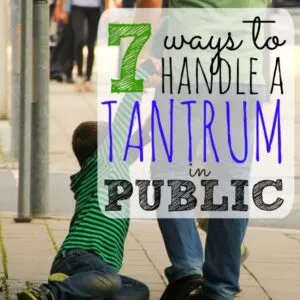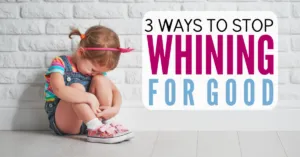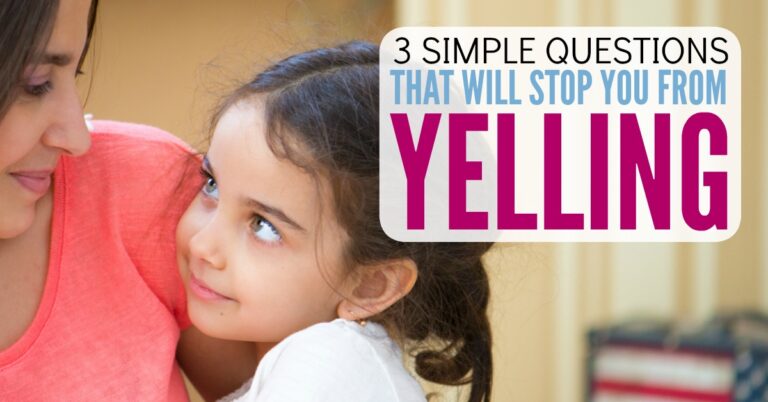Podcast Episode 49: When to Worry About Tantrums and How to Stop Them
We all have our epic tantrum meltdown stories. They are almost like our badges of courage in parenting.
One that still plays out clearly in my head is when my son decided he’d had enough and wasn’t taking one step further while at the entrance to Target. There he was, face down on the floor, screaming, crying, and carrying on for everyone to see.
Yep. I was the mom that everyone was staring at. I was the one that got both the empathetic nods and soft smiles of support as well as the rolled eyes and the judgy head shakes as people quickly walked by.
READ: 4 Steps to NOT Lose Your Cool as a Mom
And in that moment, for a quick moment, I wondered…was this “normal”? Should I be concerned about the many tantrums that my son seemed to have? And what was the best way to make them stop?

We’ve all been there.
But there are a few things that can help us know what’s “normal” and what really isn’t when it comes to a tantrum.
As well as some easy tactics that will work with any typical tantrum.
So here’s what to look for and what you can do to stop those tantrums.
Let’s start with those red flags.
These are little clues that you see consistently whenever your child has a tantrum that tell you these behaviors are out of the ordinary and you want to bring to your pediatrician to discuss and see if there is something else going on that your little one is trying to communicate with you.
- Hurts themselves or others consistently
- Tantrums that go on for more than 30 minutes consistently
- You consistently can’t redirect your child’s attention from the tantrum
- The tantrums seem to consistently occur when there is a change in the environment (example: lights, sounds, transition to other activities)
Okay. Now that we know what red flags to look for, let’s look at how to stop those “normal” everyday tantrums. But in order to stop them, we need to know what causes them right?
There is a very handy little acronym called H.A.L.T. This acronym stands for
- Hungry
- Angry
- Lonely
- Tired
And these 4 things can account for the majority of your kid’s tantrums when you think about it. So…
What to Do?
- Feed them
I still carry little snacks around to feed my kids even at 8 and 12 to keep the “hangry monster” away!
- Connect
Whether your child is angry or lonely, this one works wonders! Just take a moment and acknowledge their emotions. A great tactic for this can be found in the book Happiest Toddler on the Block by Harvey Karp, M.D. In his book, he talks about using Toddlerease: meet your child at their eye level, talk to them using close to their level of intensity in your voice, and give them short phrases of 1-3 words to express their feelings.
- Check Bedtime
Look at your routines and make sure they’re getting enough sleep on a daily basis. Being tired makes everyone a little more grumpy and a lot more likely to have a meltdown.
READ: 3 Steps to Create an Awesome Bedtime Routine For Your Kids
So now that you know what to look for when determining if your child’s tantrums are “normal” or not, as well as some solid tips to help bring an end to the tantrums…leave us a comment below telling us what your child’s worst tantrum was all about.
Resources We Shared In This Episode:
Join our newsletter! Create a family meal plan and chore plan in seconds! Get our 7 Chat GPT Prompts That Manage Your Home & Family Like Magic absolutely FREE!
Join our FREE No Guilt Mom Podcast group
Check out our No Guilt Mom Amazon Shop with recommended books and books from podcast guests HERE!
Learn all about Balance VIP HERE!
No Guilt Mom YouTube Channel Check us out and subscribe to be notified every time we have new videos added for parents and kids, as well as video footage from our podcast episodes!
Download the Transcripts HERE
Check out our favorite deals and discounts from our amazing sponsors here!
Don’t forget to Rate & Review the podcast!
We’d love to hear your thoughts on the podcast! If you could take a moment to Rate & Review the No Guilt Mom Podcast on Apple here we’d be so grateful! Not sure how to do it? We got you covered! Check out this short video we made to show you how to leave a review.
Listen on Spotify? You can rate us there too!





















